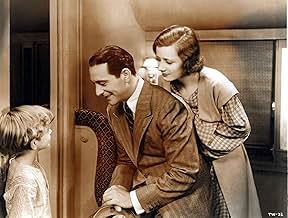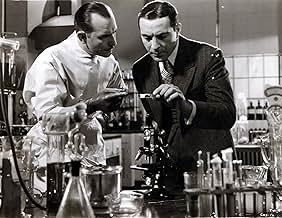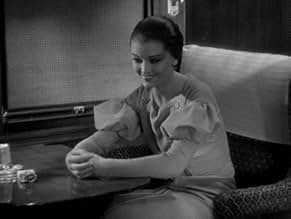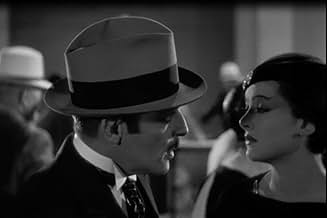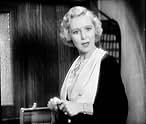Ajouter une intrigue dans votre langueA young woman plots astrological revenge on schoolgirls from her past.A young woman plots astrological revenge on schoolgirls from her past.A young woman plots astrological revenge on schoolgirls from her past.
- Réalisation
- Scénario
- Casting principal
- Undetermined Role
- (scènes coupées)
- Twelfth Woman
- (scènes coupées)
- Thirteenth Woman
- (scènes coupées)
- Mary
- (scènes coupées)
- Bit Part
- (non confirmé)
Avis à la une
So Ursula has apparently been itching for revenge ever since. And 15 years later she puts her plan into action. One of the girls asks for horoscopes for all 13 from the imminent Swami Yogadachi. His lover happens to be Ursula who has hypnotic powers of her own. Yogadachi casts the horoscopes, which seem at least semi positive. Ursula then puts the Swami in a deep sleep and replaces the horoscopes with her own for each woman, warning of death, prison, insanity, etc. With Yogadachi's usefulness to her finished , she then hypnotizes him so that he runs into the path of a moving train. This woman is NOT a nice person!
But Ursula never seems to finish what she starts. She disposes of only three of the 13 women when they read the horoscopes, become obsessed with the inevitability of their predicted fates, and actually cause their horoscopes to come true. Ursula then becomes oddly focused on Laura Stanhope (Irene Dunne) who is urging the others to ignore these horoscopes as so much hogwash. She seems determined to break Laura, not because she was particularly cruel to her, but because she is resisting her little game. Complications ensue.
The film does have something to say about the power of the mind over situations. And Ursula is not in the least bit a sympathetic character given that she has no natural affection towards anyone. She has enemies and men she uses to get revenge on those enemies - Those are the only two kinds of relationships she seems to have as an adult.
I'd say the one hokey thing that the film does consists of the special effects. For some reason a bright star appears in the center of the screen every time a sorority sister fulfills her face or Ursula hypnotizes someone to do her bidding. It's short at just under an hour and pretty entertaining.
This silly junk was one of Myrna's final Eurasian villainess roles. It's interesting after years of exposure to her as the perfect wife or the level headed, spunky All-American woman to see her in a role that was typical of her pre-stardom days, that of the foreign mantrap. She looks great but is far better than the part deserves. She is noticeably understated while most of the other performers over emote.
Made when sound was in its relative infancy many of the performers are still reliant on over-sized, distracting stage gestures. Irene Dunne starts the picture in subdued fashion but ends up as over the top as everyone else, she's been much better elsewhere. Same goes for Florence Eldridge, a very fine actress usually though she's overblown in this.
Full of actresses of note for one reason or another. Besides Myrna and Irene there is Jill Esmond, first wife of Laurence Olivier, Kay Johnson, a DeMille favorite and the mother of respected character actor James Cromwell and Peg Entwistle, the infamous and tragic actress who threw herself from the Hollywood sign in despair a few days after this film premiered, it's her only film credit. Except for the two leading ladies each only get a scene or two to make an impression.
Fun in a ludicrous way but aside from the cast this is a routine, if outlandish, programmer that were it not for them would be utter forgotten.
Second, the writing is good with an intriguing plot: twelve former classmates of a boarding school are being killed off by rejected classmate number thirteen through the use of phony horoscopes. The plot should have enabled the story to move along at an even pace. Yet there are places in this approximately one hour film that are very boring. These boring stretches are broken by a few exciting moments. The trapeze scene is a dandy as is the final scene aboard the fast-moving train. Cinematography is exceptional in some places considering the age of the film, especially the final scene featuring Myrna Loy. Also impressive is the car chase sequence when the chauffeur is attempting to make a getaway with Laura Stanhope captive in the back seat.
Third, though the racial prejudice angle is bold and enlightening for 1932 when Hollywood was notorious for racial stereotyping, it actually only figures in at the very end of the movie in one extremely well-done and well-written scene when the two protagonists Ursula and Laura (Loy and Dunne) confront one another in a spell-binding moment of truth and retribution.
How long must we wait until a restored version of this film is released on DVD so we can make a more accurate assessment?
Myrna Loy is very beautiful and exotic as Ursula Georgi (which I actually think is an Italian name) who is a half-caste seeking revenge on sorority sisters who kept her out of their group. She uses the power of suggestion, switching their actual horoscopes by mail that they receive from a swami with predictions of doom. One by one, the women die. She ultimately knocks off the swami and turns her sights on the disbeliever of the group, played by Irene Dunne.
Loy would soon break free from exotica with "The Thin Man" series. Mrs. Laurence Olivier at the time, Jill Esmond, appears in the film, as do Ricardo Cortez and Peg Entwhistle. For Entwhistle, the dire predictions in the film played out in real life for her. Shortly after this movie was made, she achieved a lasting fame by committing suicide by jumping from the "Hollywoodland" sign in Los Angeles.
Even after 70 years, "Thirteen Women" is an eerie, lushly produced thriller that provides more genuine chills than in any of today's counterparts. For movie buffs, the real treat is seeing Irene Dunne and Myrna Loy (both of whom within a year or two would emerge as two of Hollywood's most bankable and respected leading ladies) slumming in a nasty pre-Code creeper about a half-caste sorority girl (Loy) who enlists the aid of a sinister spiritualist to exact revenge on the prejudiced campus "ladies" who expelled her from their club a few years earlier. One by one, and by devious means, Loy (still playing slant-eyed fiends, but not for much longer, thank God!)meticulously plots and carries out the not-for-the-squeamish deaths of her victims--until the last one alive, Irene Dunne, happily married with an adorable young son, remains her sole surviving target. After her plans to poison the toddler go awry, Loy goes bonkers and boards the train where the police (it certainly takes them long enough to figure out what's going on) have secreted Dunne until they apprehend Loy. The climax--with a dagger-wielding Loy chasing the terrorized Dunne through one car to the next--is a corker--meticulously copied and working equally well a half a century later in the climax of "Terror Train" (with Jamie Lee Curtis duking it out with a transvestite psycho). Even chopped to 59 minutes, "Thirteen Women" is still a landmark horror film. The most baffling mystery is why audiences rejected it in 1932. Perhaps it was ahead of its time. Depression-era loved mysteries--but uncensored exercises in sheer terror like "Thirteen Women" were too scary for comfort (even today, it provokes an unsettling series of shocks that make it the "Psycho" of the '30s--and even the "Psycho" of 30 years later had to overcome initial critical pans before audiences pounced on it and lapped up every sick, terrifying minute.) Hopefully, the 15 minutes a worried RKO cut from the original prints of "Thirteen Women" will be discovered and restored so we may someday see this unexpected treasure as it was intended to be seen. Meanwhile, even the expurgated version (shown occasionally on Turner Classic Movies--check the listings) is as dazzling and brazen a shocker Hollywood turned out in the early 1930s--before the Hayes Office took over and thwarted any further movie from going as gleefully and sadistically over-the-top as the delicious "Thirteen Women." (Even MGM had to severely edit "Freaks" to placate horrified censors and audiences.)
Le saviez-vous
- AnecdotesThere were only 11 actresses in the movie, not 13. Scenes involving the remaining two, Phyllis Fraser and Betty Furness, ended up on the cutting room floor. Several other roles also were telescoped in the editing process when the film was shortened from its original 73 minutes to 59 minutes for theatrical release.
- GaffesIn the newspaper with the headline "Horoscope Murders Still Baffle Police", there are two other stories with the smaller headlines of "Air Hero Honored" and "Judge Carrol Hands Out Good Advice and Admonitions with Stiff Fines". It can be seen that the text of those stories is composed of random lines of text.
- Citations
Jo Turner: I do envy you, Laura. To me, life is just an ashtray full of cigarette butts.
Laura Stanhope: Why don't you marry again, Jo?
Jo Turner: Oh, I would if I were sure of getting a kid like Bobby.
Laura Stanhope: What about the present fiancé?
Jo Turner: Oh, he's a lot of fun. But all he wants is a well-stocked cellar, a racehorse, bridge... anything but babies. Laura, why don't you marry again sometime?
Laura Stanhope: No. I could never be dependent on anyone again. I love standing on my own feet.
Jo Turner: I wonder if any woman can.
Laura Stanhope: Why not?
Jo Turner: I say, do you remember how you were always afraid the boys would go too far, and I was afraid that they wouldn't?
- ConnexionsFeatured in Arena: Hollywood Babylon (1991)
Meilleurs choix
- How long is Thirteen Women?Alimenté par Alexa
Détails
Box-office
- Budget
- 125 000 $US (estimé)
- Durée1 heure 13 minutes
- Couleur
- Rapport de forme
- 1.37 : 1
Contribuer à cette page


